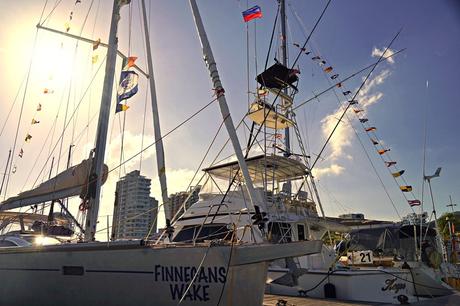
What should you know before sailing to Colombia? Planning details often clarify with hindsight. What we loved about Colombia is a start for anticipation: for those considering this destination, here are a few additional tips to help with practical planning for cruisers.
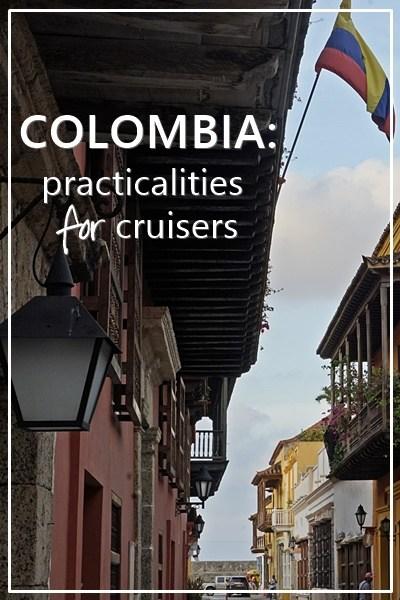
Ports
Along the Caribbean coast of Colombia, there are two choices for ports: Santa Marta, and Cartagena. We chose to stay in Santa Marta, and visited Cartagena by bus. I’d do the same thing again if we return to Colombia and believe it’s the best option for a shorter stay.
For a shorter visit, and Santa Marta offered the best convenience and efficiency, with the opportunity to soak up exposure to range Colombian experiences. Within Santa Marta were museums, good food, and a well preserved historical district; logistics at the cruiser-friendly marina were a breeze with the front office support of Kelly Hernandez.
Santa Marta is a good base to explore Colombia, for daytripping or beyond. One-day forays into the Sierra Nevada (it would make a great overnight to sleep in a hammock in some hillside hostel or farm and hike further!) and national parks are easy. Going further? Santa Marta and Baranquilla airports make short hop flights to further exploring in central or south America a snap for those with the time and budget. If you won’t sail much further in South America, jump from here to experience the Amazon or Machu Picchu.

Saddling up to go riding near Rio Buritaca, a couple of hours east of Santa Marta.
In Colombia you must clear in and out of every port, and an agent is required for clearance. This additional bureaucratic layer comes with additional cost. In Santa Marta, the marina arranges the agent covers their fee- handy! In Cartagena, you must hire the agent (fee approx. US$100) to handle your clearance with the Port Captain.
The hassle factor in time and cost of clearing in and out of Cartagena helped confirm our decision to visit overland instead of sailing (because no way were we going to skip Cartagena!). It’s about a four-hour bus ride from Santa Marta, and the inter-city rides are affordable. There are varying grades and speeds; our direct bus had Netflix movies (driver’s choice, thankfully nothing gruesome or crazy loud, all in Spanish), air conditioning, and wifi. For the kids, there’s an added air of adventure to staying in a hotel: a rare occurrence, but affordable here. The cost was probably net zero, but the experience of seeing the countryside, trying food from vendors who came on board to sell wares, and just relaxing for a while were a good trade for wrangling with officialdom.
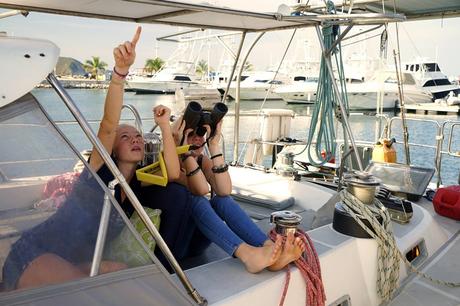
Spotting sea eagles from our berth in Marina Santa Marta
Had we planned or anticipated a much longer say, we’d have been more likely to skew towards Cartagena. Unlike Santa Marta, it’s safe to stay anchored out and access dinghy facilities for a nominal fee; overall, our cost to stay would have been much lower for a monthlong visit, while marina costs mounted (we stayed more than twice as long as we anticipated). One big downside to the harbor in Cartagena is the reputed rate of fouling: every boater who stopped there bemoaned the speed at which bottoms were covered with barnacles and growth. Santa Marta isn’t exempt, but it’s not quite as bad.
Security
Colombia’s Caribbean coast no longer deserves the frank warnings touted in our 2015 Panama guide, but security still requires attention. Two years previously a cruising boat anchored in Taganga Bay, near Santa Marta, was victim to armed robbery and assault. It wasn’t the first time in that location: in our mind, that made the security of a marina our only option in Santa Marta. It’s hard to swallow the cost, but a no-brainer compared to risking physical harm. Reports on CSSN and Noonsite helped inform our decision.
While we felt secure aboard Totem and in general, petty theft is a problem. Three other cruisers in the we met there were robbed during their stay in Colombia: not from their boats, but ashore. Two were crimes of opportunity (handbag disappeared from the patron in a restaurant; wallet taken from an open tote in a shopping cart at the supermarket), one a deliberate attack (a pedestrian distracted by the smartphone in hand was targeted by motorbike thugs who forcibly took a bag). We’ve heard anecdotal stories about petty theft; having so many hits in our small circle drove home the need to be cautious.
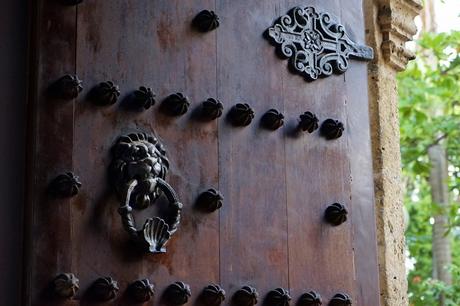
Massive door knockers in Cartagena represent the homeowner’s livelihood, turning an Old Town stroll into a scavenger hunt for 1700s occupations
Timing
We arrived as the trade winds were up. Sometimes called “Christmas winds,” the Caribbean easterlies increase force in December. There’s probably some regional variation: in Colombia, they’re reputed to linger through March. This is really not a great time to be sailing off the coast! Windspeed isn’t a big deal, but seas are, and the wind contributed to an unpleasant state. Timing is taken out of your hands too: at this writing, winds have been in the 40s and clocked over 50 knots at the dock in Santa Marta recently. Boats have been waiting for a couple of weeks for a break in the weather sufficient to depart.
Better timing would be to avoid this period of peak trades. We’d have done well to arrive in early November, and depart in December before the breeze picked up (in fact, the weather window we arrived with in late December saw a rush of departures from Santa Marta as boats took advantage of moderated conditions to make a break… west to Panama, or north towards the Greater Antilles).
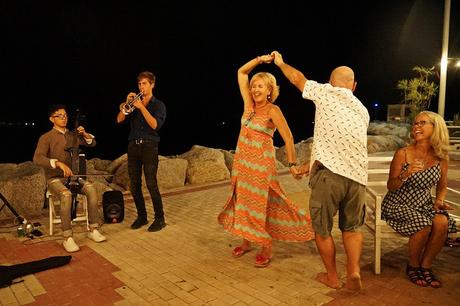
Cruisers dance to a Venezueland bnd on the patio at marina santa marta
Another consideration around seasonal timing: rainy season downpours wash off the sooty dirt that otherwise accumulates on boats in Santa Marta. Our friend Bev left her catamaran for a couple of the wet months and came back to a clean boat. A few weeks later the rain had stopped and the black dust coated everything. Part of this dirt is probably partly from the darker sand beaches nearby, but I suspect much stems from coal transfer stations at the port. That’s caustic stuff you don’t want sitting around on your boat, but water use to rinse it off is metered at the marina – it would have added up to rinse the everyday accumulation.
Other formalities
An agent is needed for port clearance, as mentioned. In addition, Colombia requires a cruising permit for any stay over 5 days (it seemed like the ARC rally passing through made this part of their calculation for duration of stay). Lucky Canadian visitors are charged a reciprocal visa fee; no other nationalities we know of had to pay this. The process takes some time as the TIP doesn’t begin until you’re in-country for the minimum number of days, and includes a personal visit from a friendly customs officer who wants to take a picture of your engine and its serial number. That was a first! It’s a lot of paperwork, another point to the Marina Santa Marta for taking care of details…they also helpfully provided multiple copies of our zarpe (outbound port clearance) and crew list (in Spanish), knowing these would be required when we checked into Panama.
Marine work
Haulout facilities are available in Santa Marta and in Colombia: what’s missing are well stocked marine chandleries. This didn’t stop a few boats we met from tackling projects in Colombia, and based on how much we enjoyed the country in general and how affordable labor rates are in particular, I think it makes a strong alternative to southern Caribbean haulout options (e.g. Grenada, Curacao, T&T). The raw materials and skillsets are here, they’re just not tuned to the marine market. If shipping parts in, it’s important to use a reputable courier (in Colombia, FedEx and DHL have good reputations: once in-country our DHL parts were quickly delivered. The books sent by the US Postal Service are STILL lost on Bogota somewhere).
I don’t know when we’ll get back, but Colombia left a mark…and still I’ve failed to capture the best memories, soon to follow.

